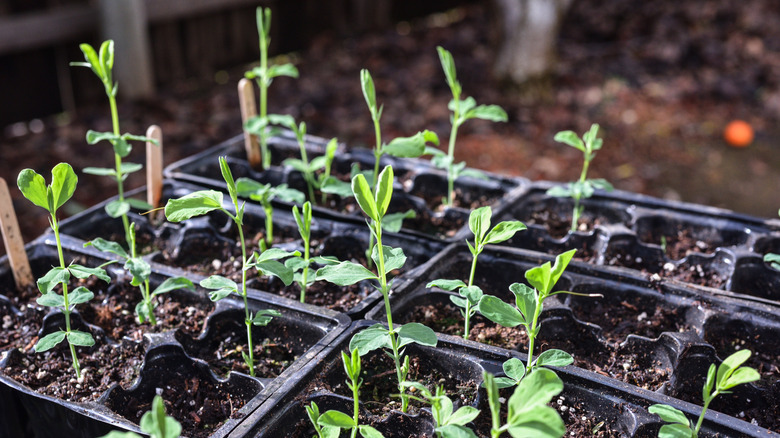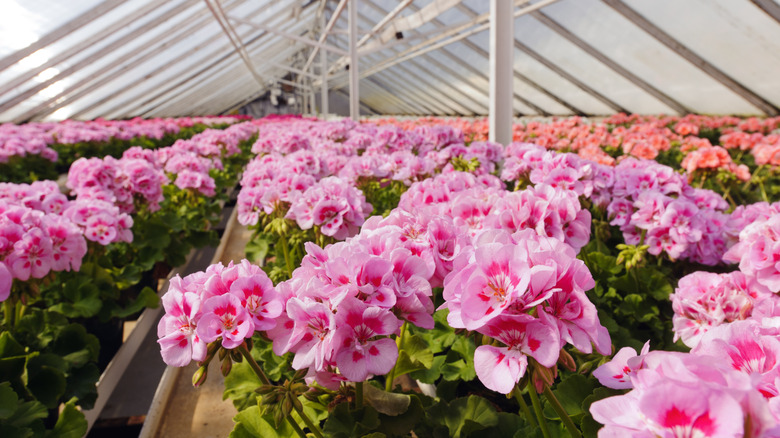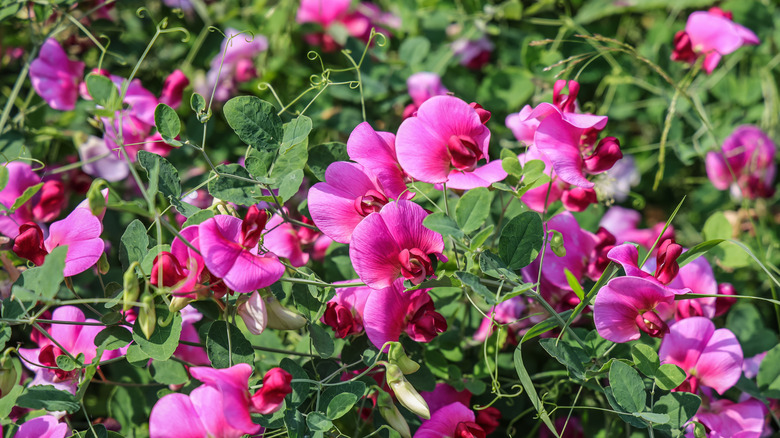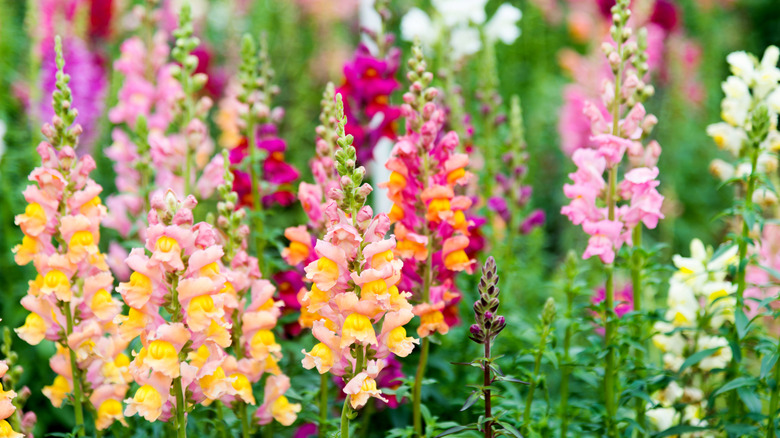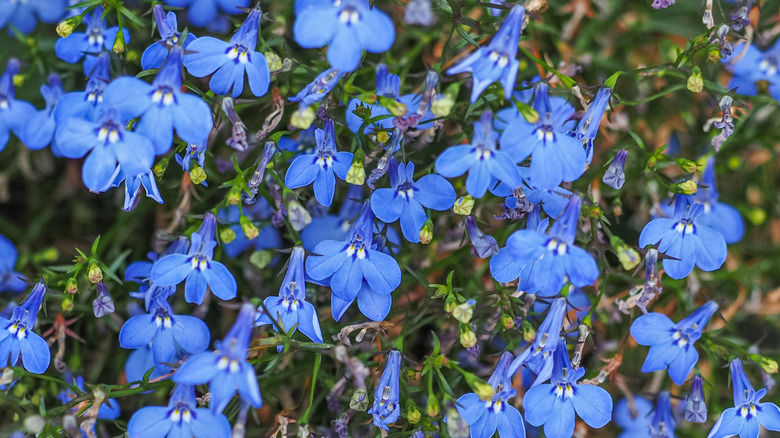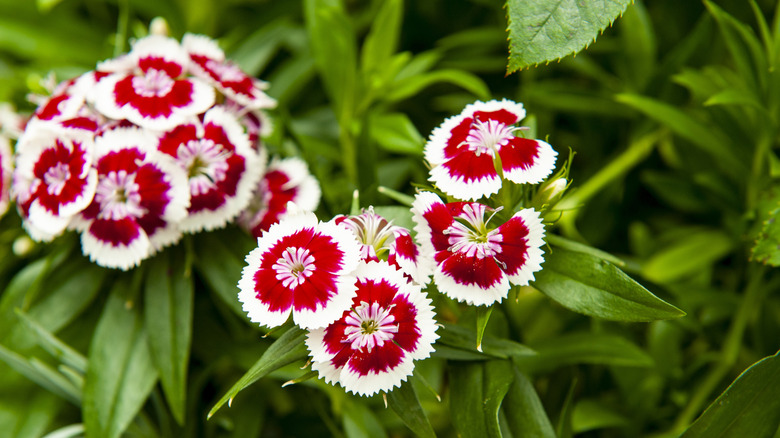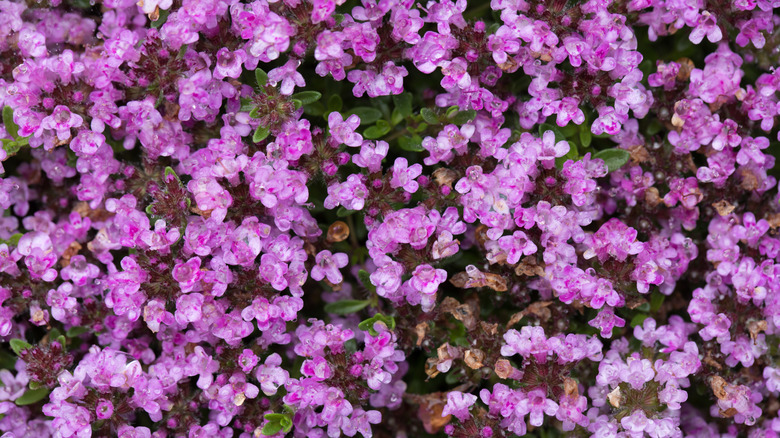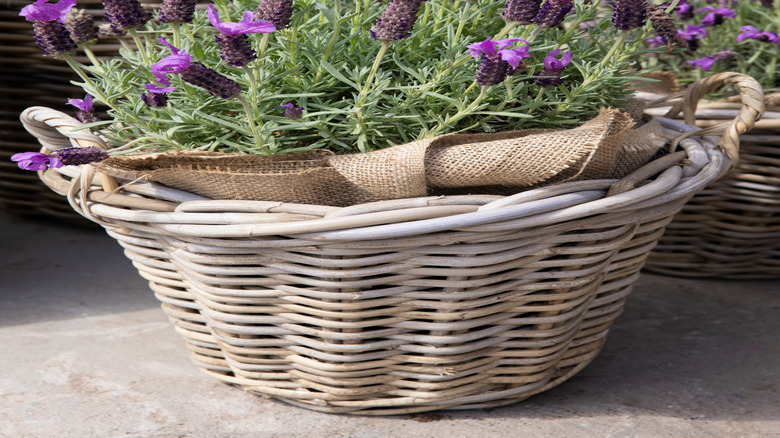Start These Seeds In Your Greenhouse Now For The Earliest Blooms This Spring
Spring wouldn't be the same without the bright, sweet-smelling display of flowers that we associate with the season. But in order to produce those early blooms that signify the start of spring, the plants must have plenty of time to mature. That means getting the seeds into the soil early, even when it's still brisk outside. Seeds that you can start in your greenhouse right now to get a head start on your spring flower display include geraniums, sweet peas, snapdragons, lavender, and more.
Starting seeds in a greenhouse can be an effective way to keep plants healthy in a controlled environment, extend the growing season, and give seedlings enough time to fully mature before spring. While all of the seeds mentioned in our lineup can be started early in greenhouses and will produce spring flowers, the exact timing depends on your location. Often, seed packets will direct gardeners on the best time for sowing based on the date of the last expected frost in the region.
Geranium
Geraniums (Pelargonium) are an annual plant found in countless home gardens around the world, with many varieties available. While geraniums are often grown from cuttings, they can also grow from seeds. They must be sown early to bloom in the spring, and some varieties, such as 'Moulin Rouge' and 'Border Supreme,' can be started as early as January. Geraniums typically take 12 to 16 weeks to go from seed to flowers. Aim for a temperature of approximately 75 degrees to help the seeds germinate. You can move them outdoors after the last frost has passed.
Sweet pea
Sweet peas (Lathyrus odoratus), an annual flower, are beloved for their sweet aroma and colorful blooms. If you live in a warmer climate, you'll see these plants flowering in early spring. Getting an early start is key to success. Depending on your USDA zone, sowing in a greenhouse from late January to early March, or six to seven weeks before the last frost date, is typically best. Many gardeners soak the seeds before sowing to help them germinate more quickly. If transplanting outside, do so as soon as the soil is soft enough to work. Note that sweet peas are poisonous.
Snapdragon
Snapdragons (Antirrhinum majus) are known for their unique dragon-shaped flowers that are available in almost any color. They are usually grown as an annual plant. They flower from spring to fall, and some varieties, such as 'Chantilly,' are especially cool-weather-friendly. Snapdragons take a long time to grow, so starting early is best. When sowing, a wet toothpick may come in handy for handling these extremely tiny seeds. Keep your greenhouse in the 60-to-70-degree Fahrenheit range, and transplant the seedlings outdoors before flower buds appear, a couple of weeks ahead of the last frost.
Lobelia
There are hundreds of species of Lobelia available, but Lobelia erinus is one of the most common. This flower is often grown as an annual and comes in blue, violet, white, and red. It's tricky to grow from seed, but doable. Sow in the greenhouse 10 to 12 weeks before the last frost, pressing the seeds into the soil and leaving them uncovered. Keep the soil moist and at a temperature of 65 to 75 degrees Fahrenheit. The seeds should germinate in two to three weeks. Lobelia does best in cooler weather; high heat may cause the plants to die back.
Dianthus
Dianthus is a perennial favorite with over 300 species to choose from. Its spiky flowers stay fresh in vases for weeks and come in a range of colors and sizes. Sow seeds toward the end of January to enjoy flowers from late spring to mid-fall. Choose a species and variety that will flower in the first year, such as Dianthus barbatus 'Sweet Purple White Bicolor' or 'Sweet Pink Magic.' To thrive in a greenhouse, the plants need daytime temperatures in the 60s and 70s and as low as the 50s during the night.
Thyme
Every chef and gardener is familiar with thyme, a common perennial plant. The leaves of Thymus vulgaris are used as a culinary herb, while several creeping thyme species are grown as ornamental flowers or as a fragrant ground cover. Many types of thyme produce pretty pink or purple blooms from June through October. One caveat about thyme is that it grows slowly from seed, so be ready to give the seeds about a month to germinate. Alternatively, grow thyme from cuttings. Plant cuttings six to 10 weeks before the last frost and keep the temperatures in the 60s or above.
Lavender
Lavender is another classic perennial herb with many applications, from bouquets to DIY cleaning products. The most common type is Lavandula angustifolia, also known as English lavender, but this typically blooms in summer. Spanish lavender (Lavandula stoechas) flowers from spring through summer, while French lavender (Lavandula dentata) flowers emerge in late spring. Depending on the variety, lavender can take up to a month to germinate, so getting an early start is key. They also need plenty of light, so a grow light is ideal, and the greenhouse temperature should stay at around 72 degrees Fahrenheit during the day and 60 degrees at night.
